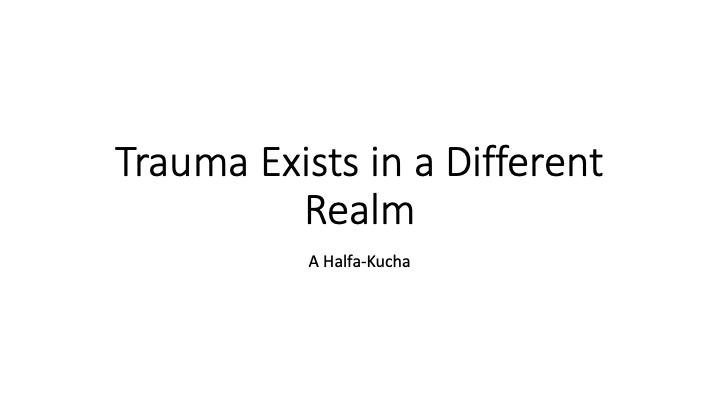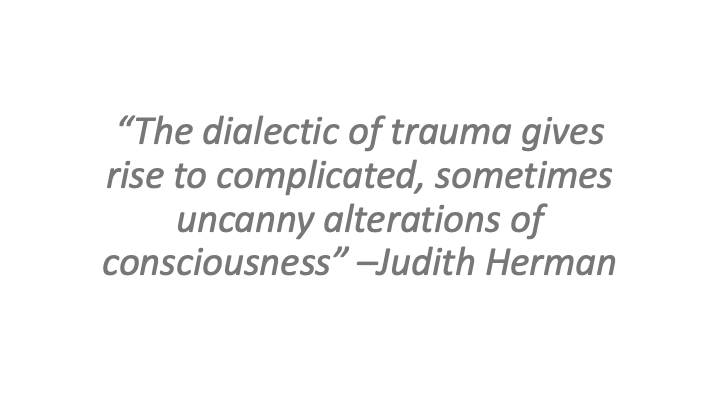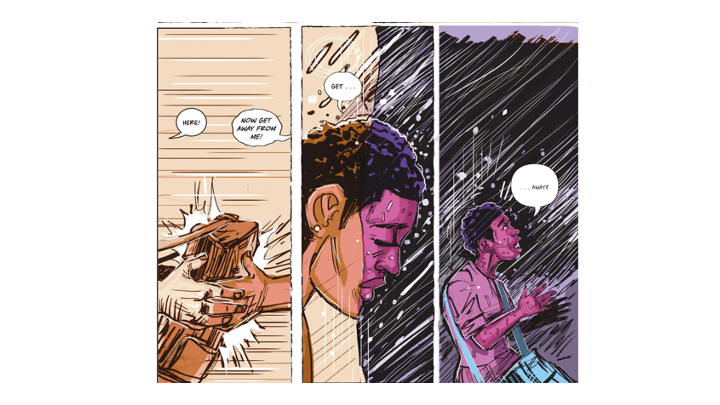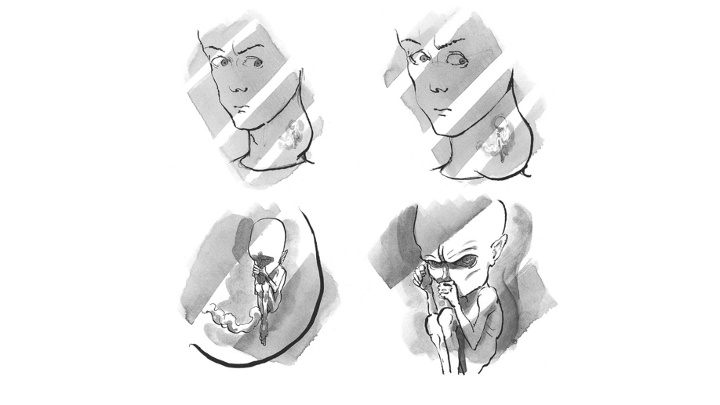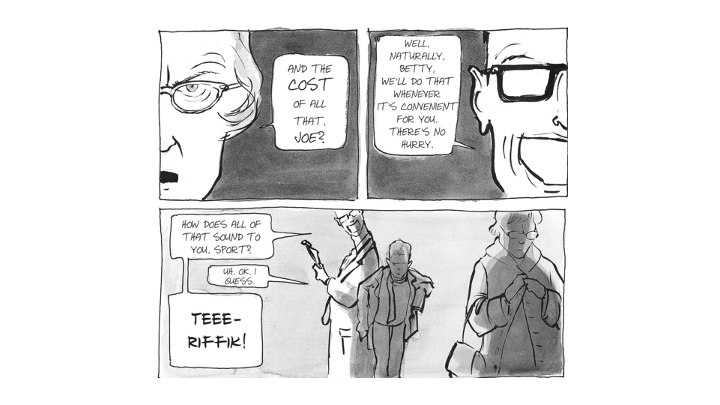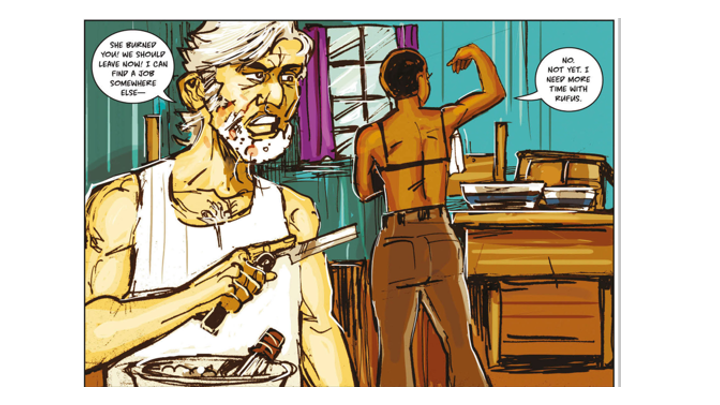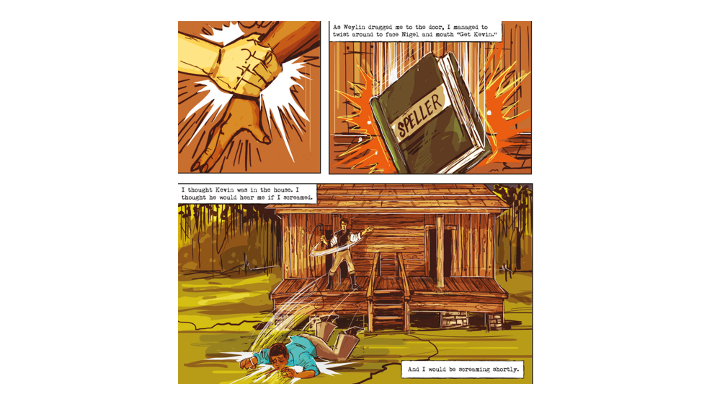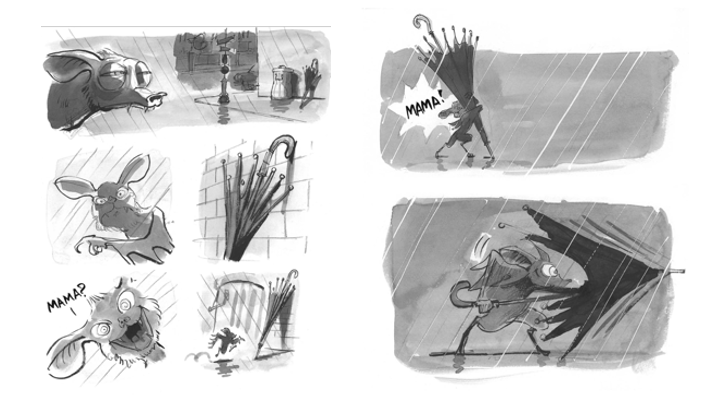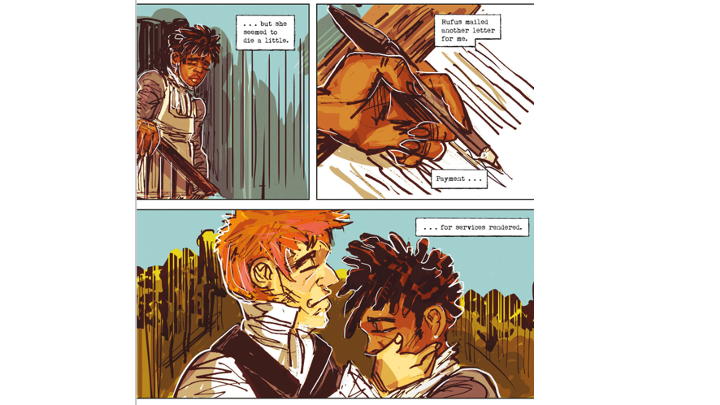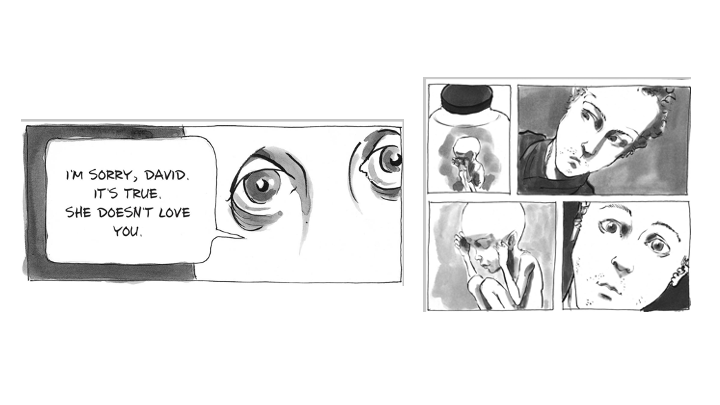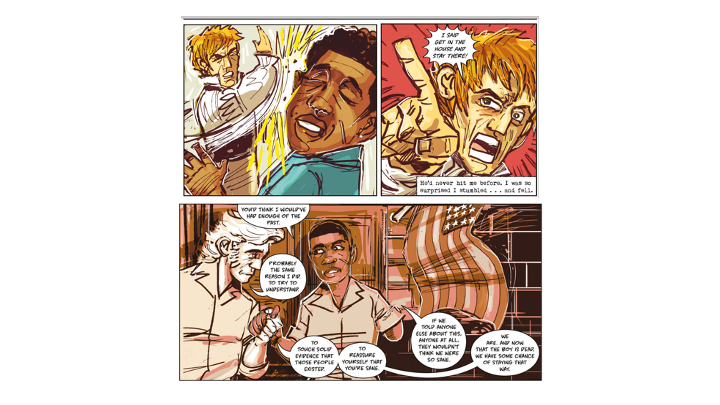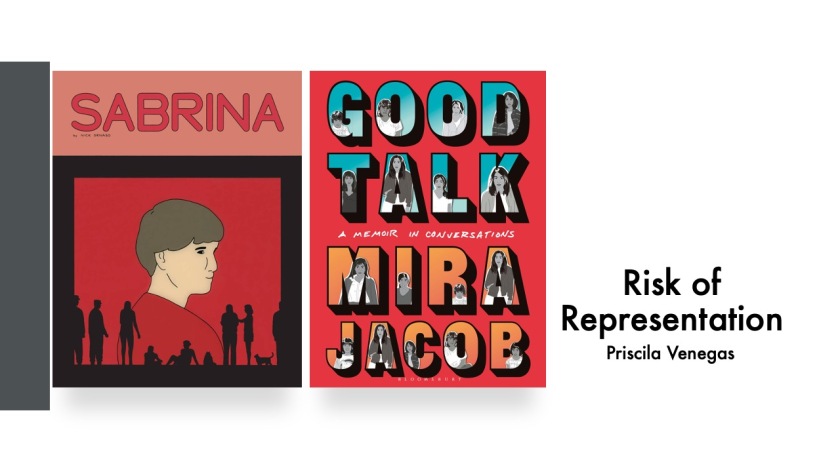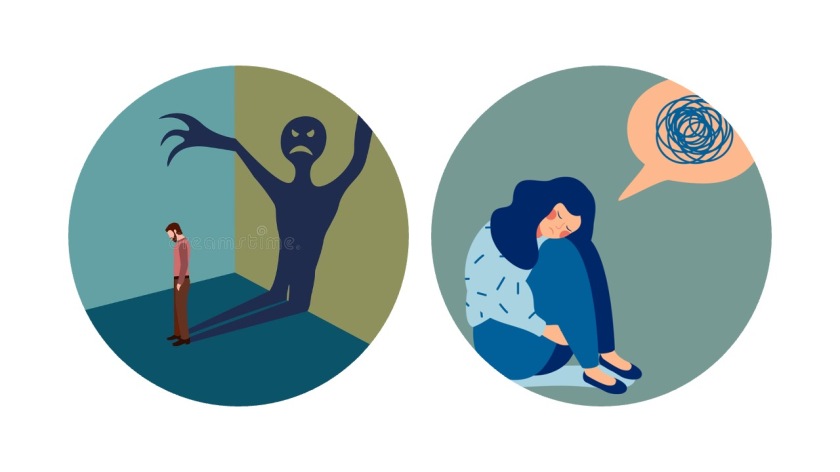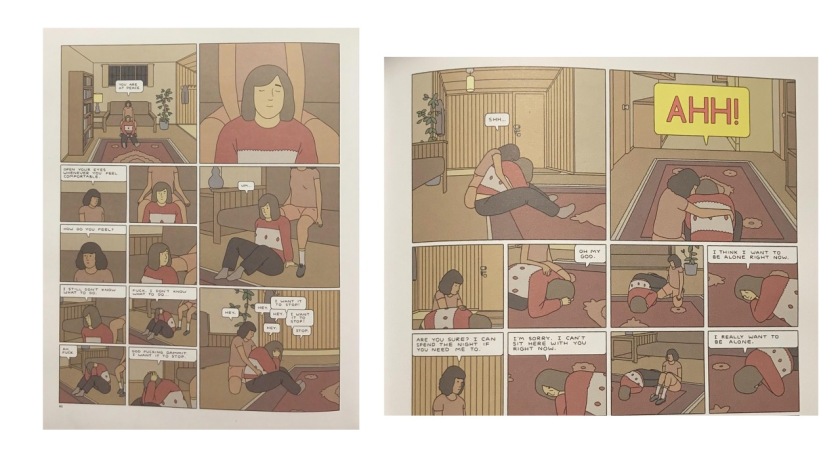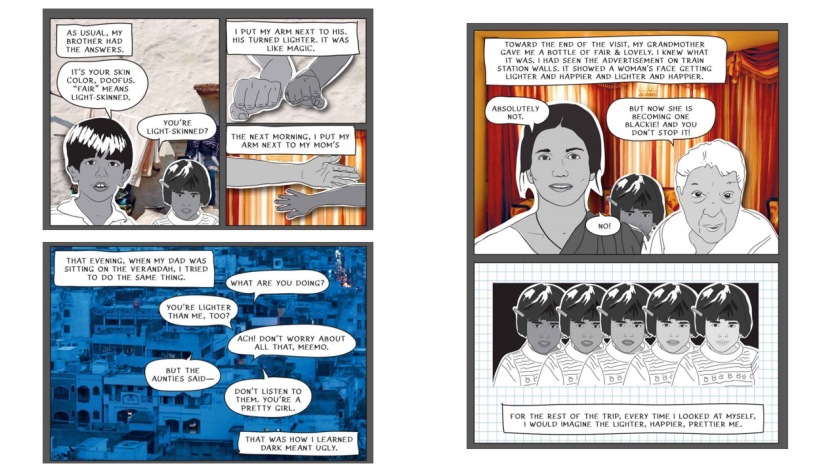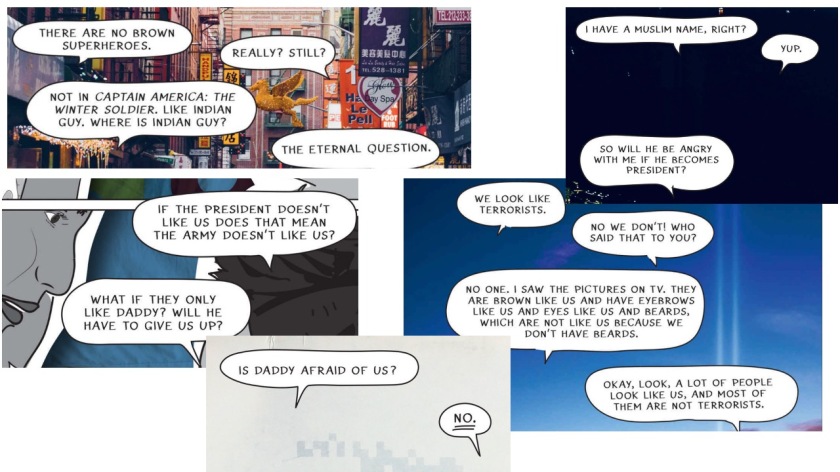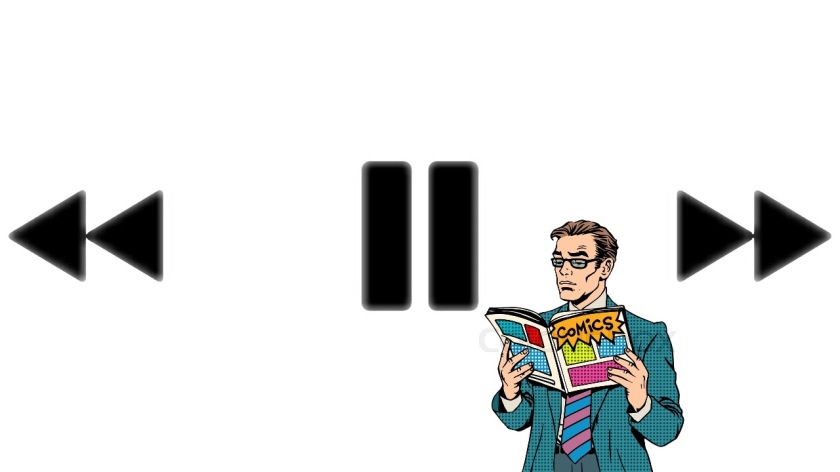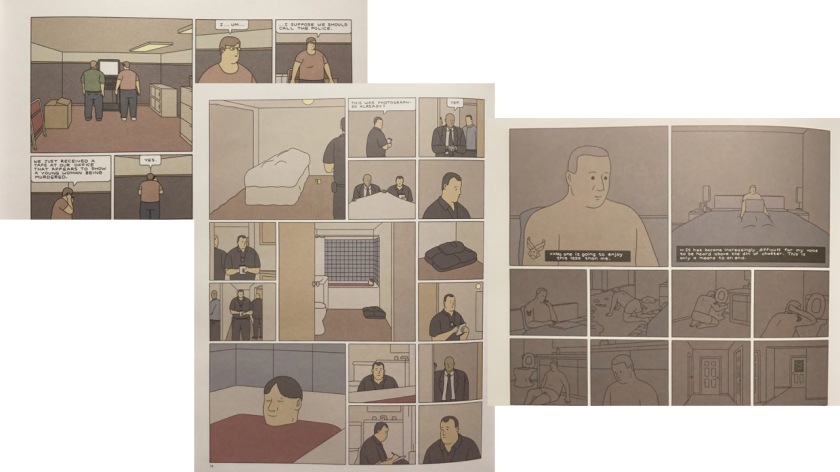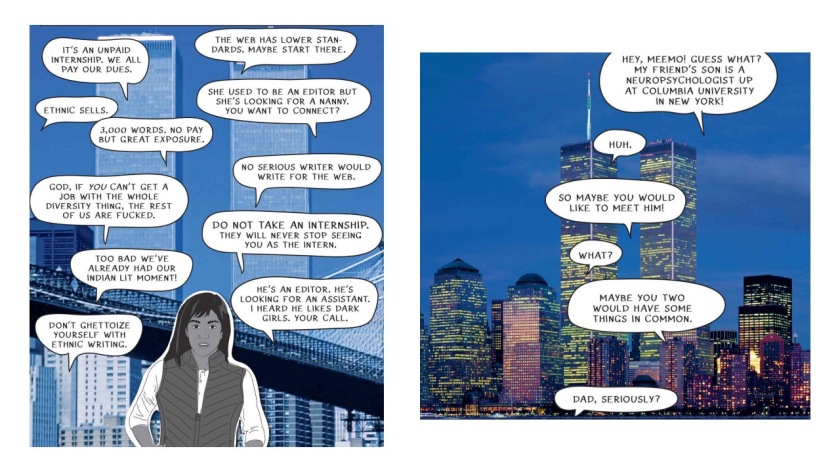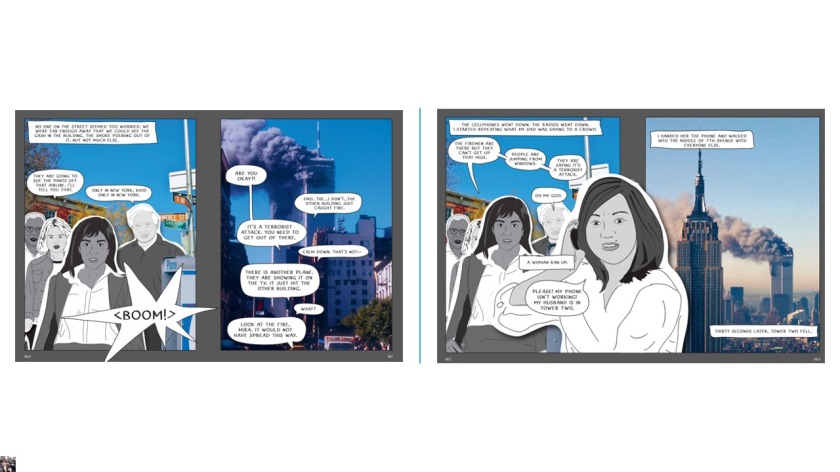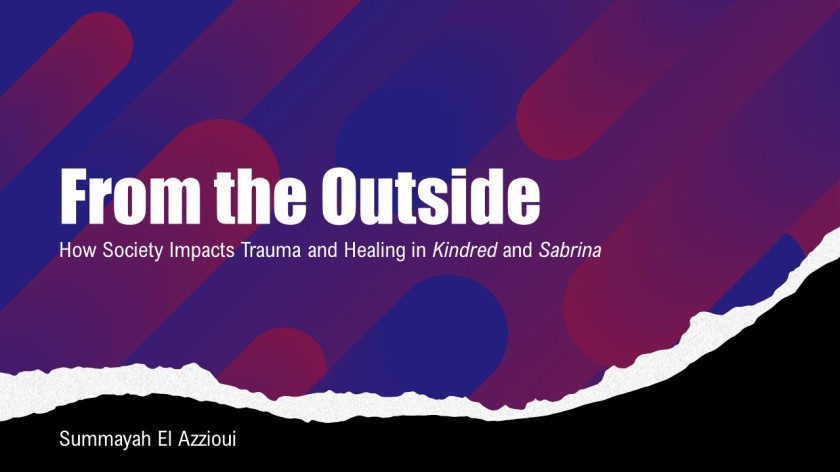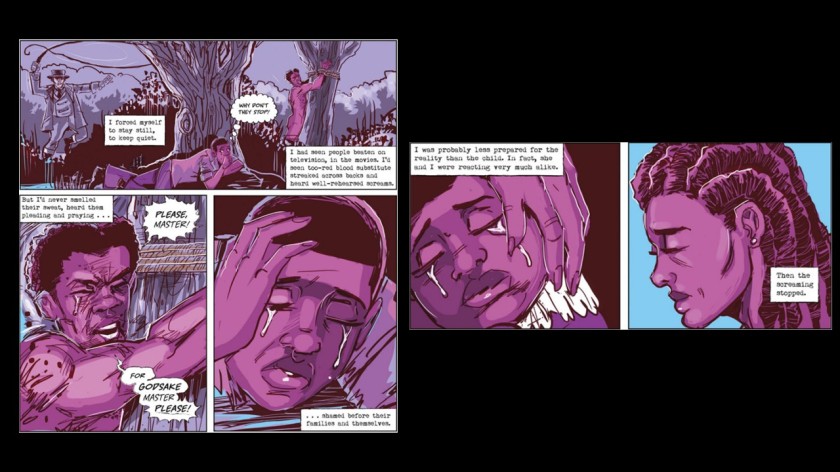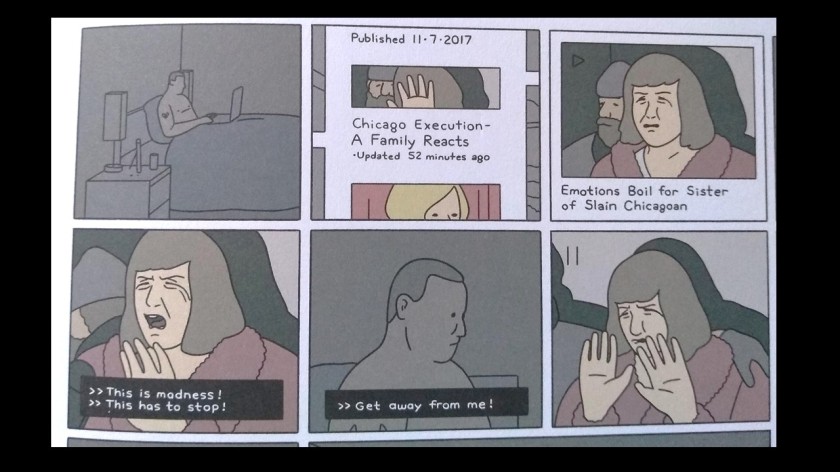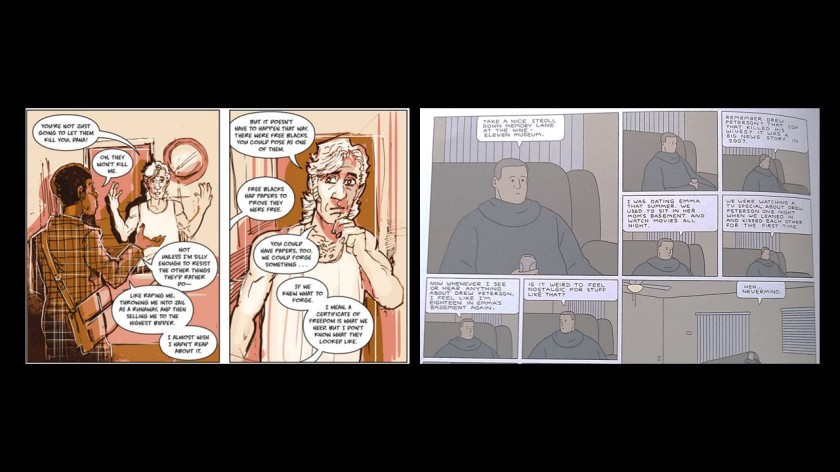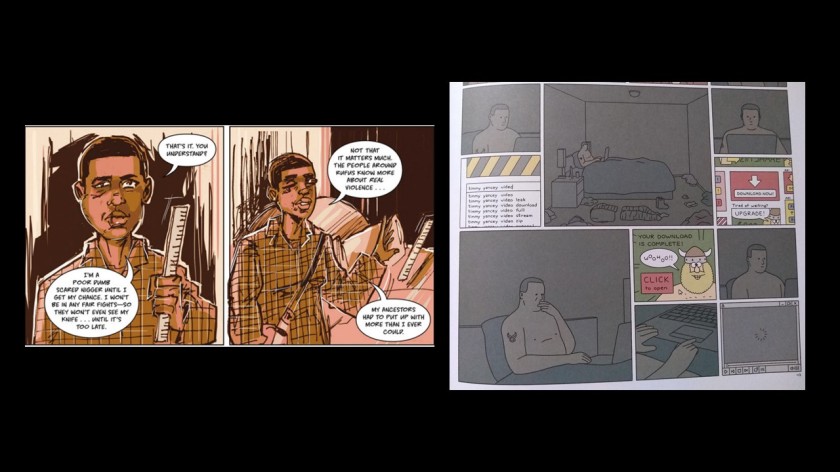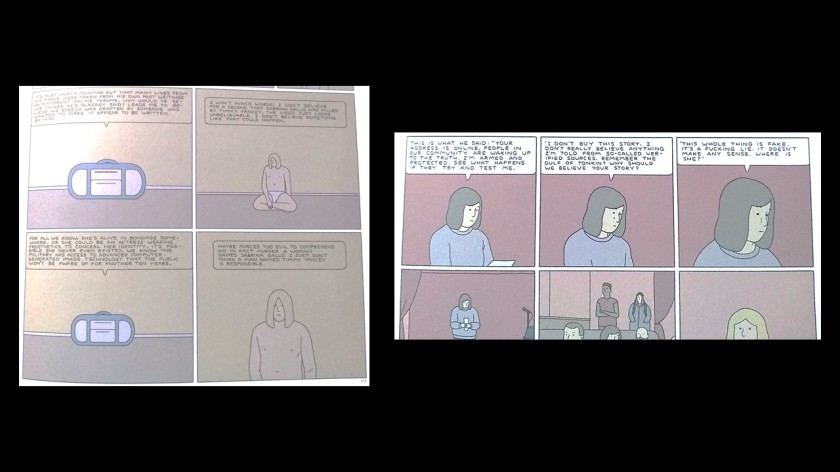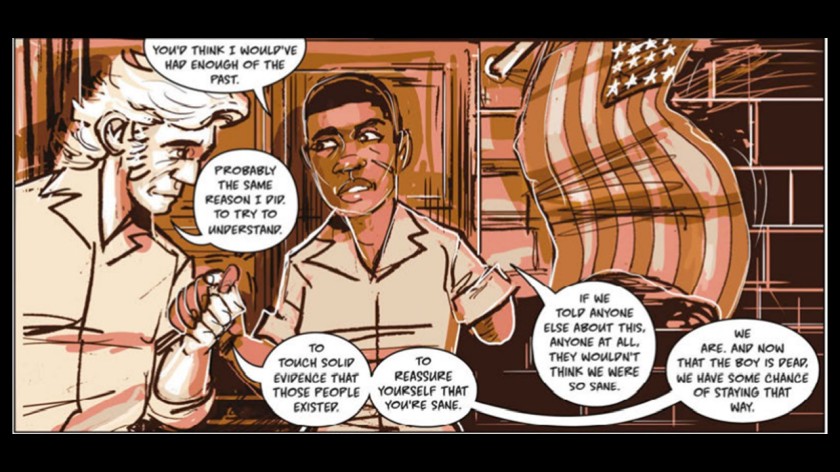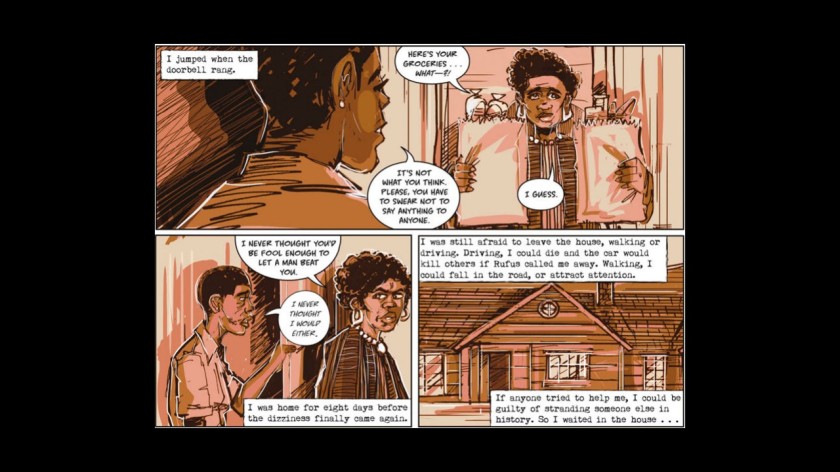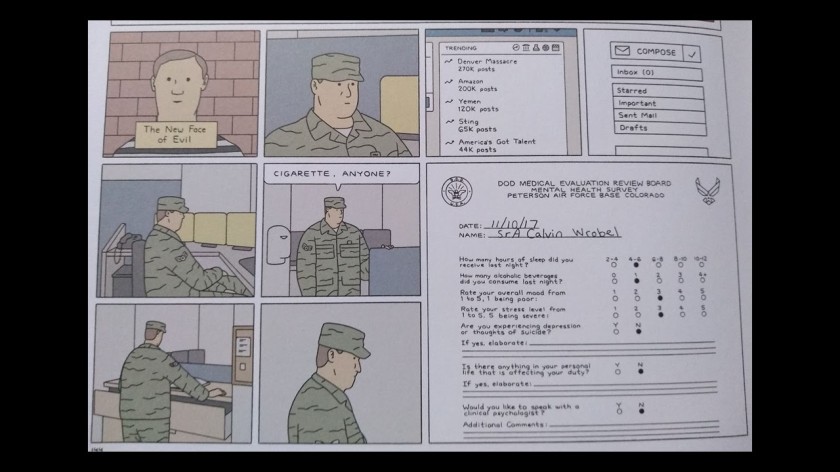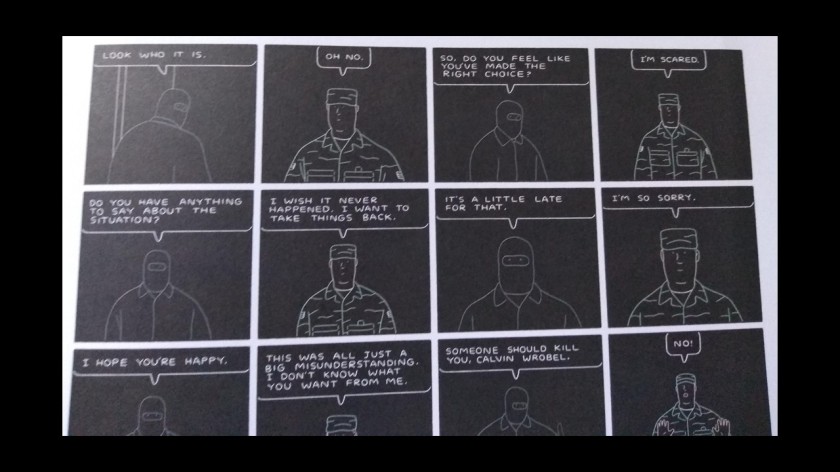Halfa Kucha Reflection
I took a different approach from most of my pieces of writing when I began constructing my argument for this Halfa-Kucha. I tried to combine aspects from previous assignments namely the tracing pages assignment and the second part of the literacy narrative. Like the tracing pages assignment I tried to build this from the ground up. Because I have digital copies of both Kindred and Stitches, I began by screenshotting various scenes that were related to trauma or recovery, and then I annotated each screenshot. Using the annotations I chose a related Judith Herman quote and began drafting up the structure of the argument. Here, I took inspiration from the second part of my literacy narrative where I try to represent my flow of ideas in an abstract, non-linear way. I drew arrows, concept maps, and webs. Finally I linearized this representation into the series of slides we see above.
For the slides I took a minimalist approach due to the nature of the presentation being just under three and a half minutes. Due to the short time, my words would be dense and important so I did not want to draw attention away from the argument by having ornate slides. Writing the script for this Halfa Kucha was challenging because I did not want to speak fast, because comic panels are already dense and the audience’s’ attention would be split. I tried to take a minimalist approach with my words, and I timed how long it would take to say each slide at a moderate pace.
Overall I liked this presentation style because it forced you to be minimalist, making sure every choice I took served a purpose. I also think the way I went about constructing this argument was more aligned with how I think, so I will definitely be using a similar method in the future. One thing that I might change in a different setting is getting rid of the timing and making it just slightly less scripted to make have a more conversational tone for certain audiences.

